Aranyak Maity
CPS-LLM: Large Language Model based Safe Usage Plan Generator for Human-in-the-Loop Human-in-the-Plant Cyber-Physical System
May 19, 2024Abstract:We explore the usage of large language models (LLM) in human-in-the-loop human-in-the-plant cyber-physical systems (CPS) to translate a high-level prompt into a personalized plan of actions, and subsequently convert that plan into a grounded inference of sequential decision-making automated by a real-world CPS controller to achieve a control goal. We show that it is relatively straightforward to contextualize an LLM so it can generate domain-specific plans. However, these plans may be infeasible for the physical system to execute or the plan may be unsafe for human users. To address this, we propose CPS-LLM, an LLM retrained using an instruction tuning framework, which ensures that generated plans not only align with the physical system dynamics of the CPS but are also safe for human users. The CPS-LLM consists of two innovative components: a) a liquid time constant neural network-based physical dynamics coefficient estimator that can derive coefficients of dynamical models with some unmeasured state variables; b) the model coefficients are then used to train an LLM with prompts embodied with traces from the dynamical system and the corresponding model coefficients. We show that when the CPS-LLM is integrated with a contextualized chatbot such as BARD it can generate feasible and safe plans to manage external events such as meals for automated insulin delivery systems used by Type 1 Diabetes subjects.
High Fidelity Fast Simulation of Human in the Loop Human in the Plant Systems
Sep 10, 2023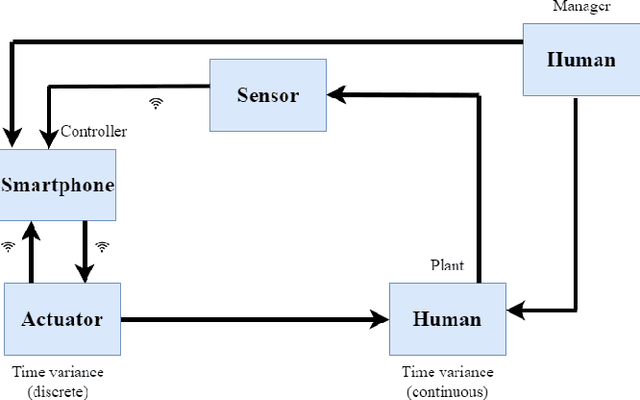

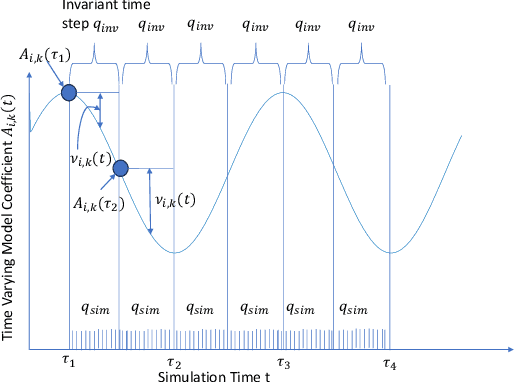
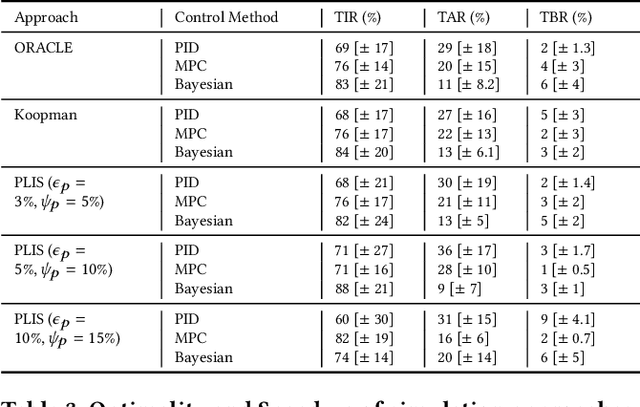
Abstract:Non-linearities in simulation arise from the time variance in wireless mobile networks when integrated with human in the loop, human in the plant (HIL-HIP) physical systems under dynamic contexts, leading to simulation slowdown. Time variance is handled by deriving a series of piece wise linear time invariant simulations (PLIS) in intervals, which are then concatenated in time domain. In this paper, we conduct a formal analysis of the impact of discretizing time-varying components in wireless network-controlled HIL-HIP systems on simulation accuracy and speedup, and evaluate trade-offs with reliable guarantees. We develop an accurate simulation framework for an artificial pancreas wireless network system that controls blood glucose in Type 1 Diabetes patients with time varying properties such as physiological changes associated with psychological stress and meal patterns. PLIS approach achieves accurate simulation with greater than 2.1 times speedup than a non-linear system simulation for the given dataset.
Detection of Unknown-Unknowns in Cyber-Physical Systems using Statistical Conformance with Physics Guided Process Models
Sep 05, 2023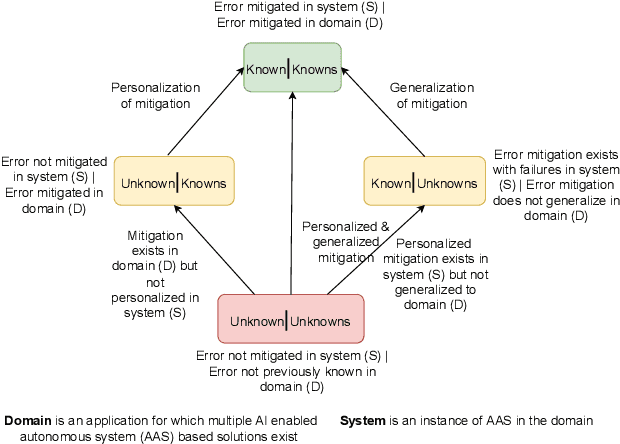
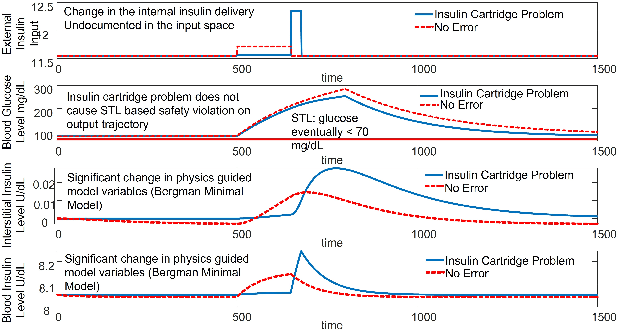
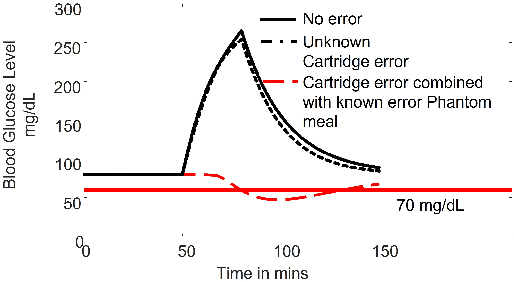
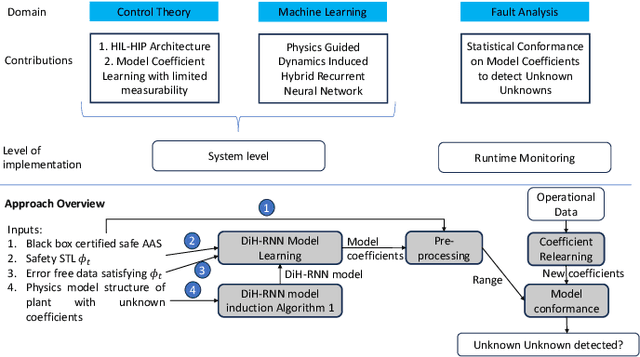
Abstract:Unknown unknowns are operational scenarios in a cyber-physical system that are not accounted for in the design and test phase. As such under unknown-unknown scenarios, the operational behavior of the CPS is not guaranteed to meet requirements such as safety and efficacy specified using Signal Temporal Logic (STL) on the output trajectories. We propose a novel framework for analyzing the stochastic conformance of operational output characteristics of safety-critical cyber-physical systems that can discover unknown-unknown scenarios and evaluate potential safety hazards. We propose dynamics-induced hybrid recurrent neural networks (DiH-RNN) to mine a physics-guided surrogate model (PGSM) which is used to check the model conformance using STL on the model coefficients. We demonstrate the detection of operational changes in an Artificial Pancreas(AP) due to unknown insulin cartridge errors.
EdGCon: Auto-assigner of Iconicity Ratings Grounded by Lexical Properties to Aid in Generation of Technical Gestures
Jun 02, 2023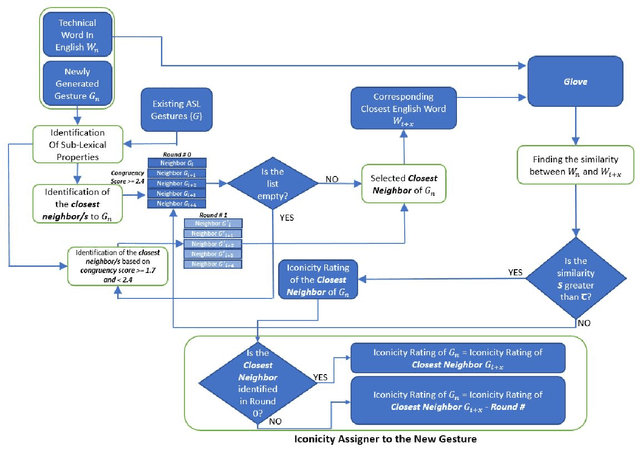
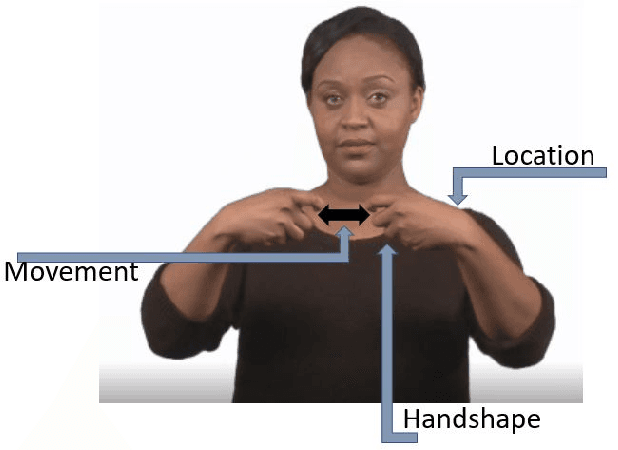
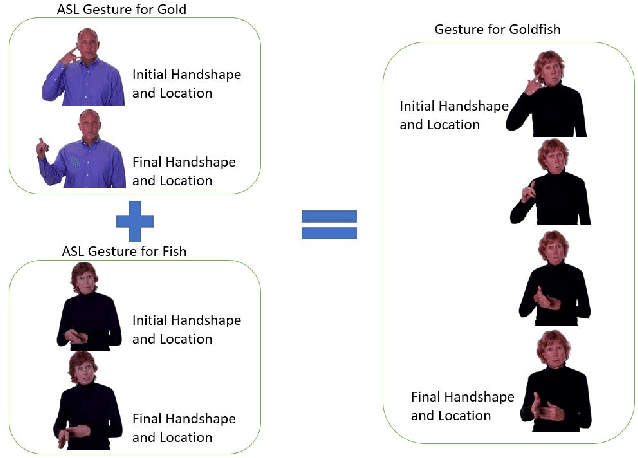
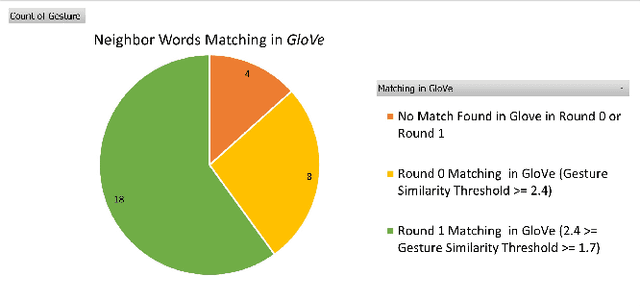
Abstract:Gestures that share similarities in their forms and are related in their meanings, should be easier for learners to recognize and incorporate into their existing lexicon. In that regard, to be more readily accepted as standard by the Deaf and Hard of Hearing community, technical gestures in American Sign Language (ASL) will optimally share similar in forms with their lexical neighbors. We utilize a lexical database of ASL, ASL-LEX, to identify lexical relations within a set of technical gestures. We use automated identification for 3 unique sub-lexical properties in ASL- location, handshape and movement. EdGCon assigned an iconicity rating based on the lexical property similarities of the new gesture with an existing set of technical gestures and the relatedness of the meaning of the new technical word to that of the existing set of technical words. We collected 30 ad hoc crowdsourced technical gestures from different internet websites and tested them against 31 gestures from the DeafTEC technical corpus. We found that EdGCon was able to correctly auto-assign the iconicity ratings 80.76% of the time.
 Add to Chrome
Add to Chrome Add to Firefox
Add to Firefox Add to Edge
Add to Edge